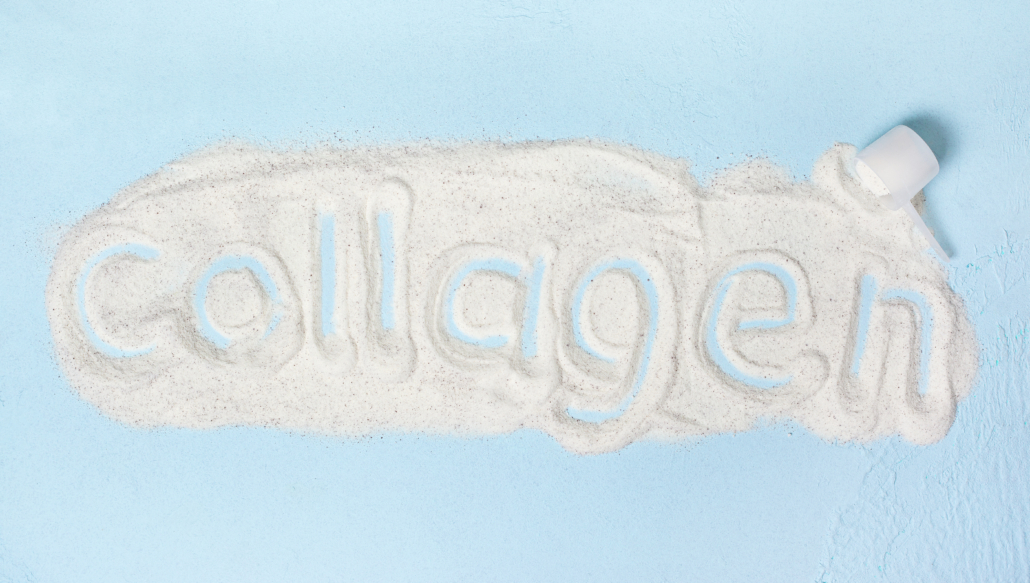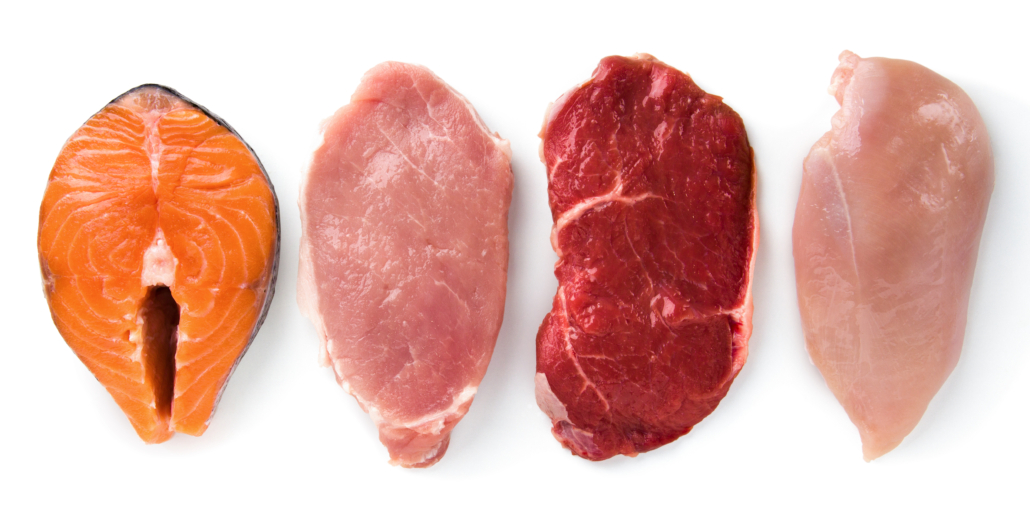We include products in articles we think are useful for our readers. If you buy products or services through links on our website, we may earn a small commission.
Is Linoleic Acid Bad for You?
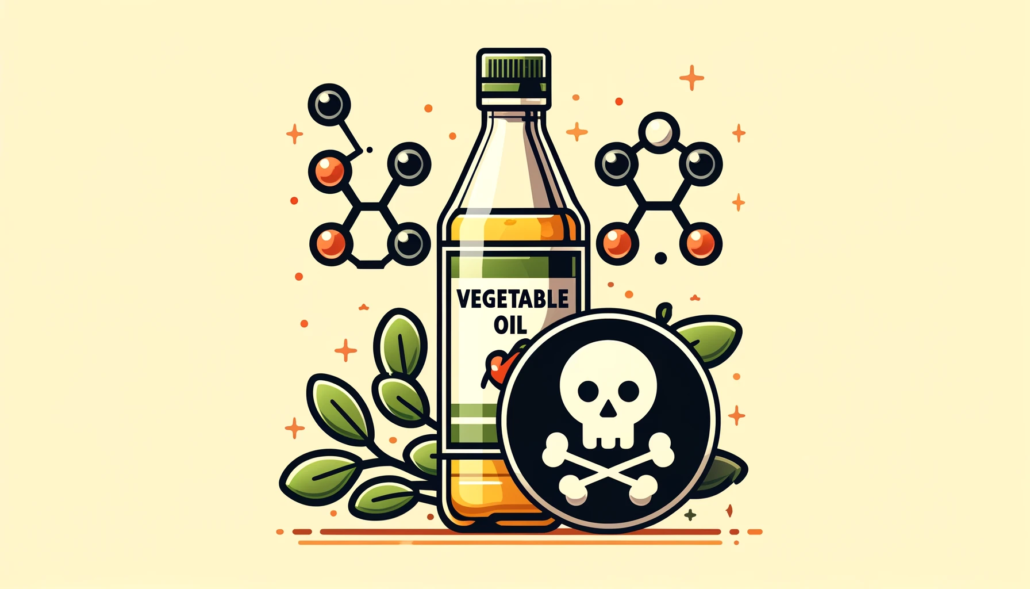
Linoleic acid is a polyunsaturated omega-6 fatty acid that has become a focal point in discussions about the negative impacts that modern diets have on our health. While it is an essential fatty acid, the modern Western diet provides excessive amounts. This excess is due to the widespread use of vegetable oils such as soybean, corn, and sunflower oil, all of which are high in linoleic acid. But is linoleic acid itself bad for you?
Studies show that this imbalance between omega-6 and omega-3 fatty acids can lead to chronic inflammation, the root cause of various health issues, including cardiovascular disease, obesity, and even cancer.
In this article, we’ll explore the mechanisms through which linoleic acid is bad for the body with the intention of helping you make informed dietary choices to support your health goals and prevent disease.
Table of Contents
What’s The Problem with Linoleic Acid?
Before the 20th century, linoleic acid constituted only 2% of total daily calories. The optimal range for our bodies’ needs is approximately 1% to 2%. When consuming a modern Western diet, linoleic acid makes up 25% of the average person’s total calorie intake. 5
Linoleic acid is the parent molecule for a pro-inflammatory molecule called Arachidonic acid. Arachidonic acid is the precursor for a biochemical pathway that creates over twenty pro-inflammatory eicosanoids.
Consuming such excessive levels of linoleic acid has been found to reduce the metabolic rate (the number of calories you burn just to stay alive) while increasing oxidative damage to body tissues, leading to chronic inflammation, autoimmune disorders, premature aging, and increasing the rate of all-cause mortality.

These graphs highlight the dramatic rise in LA consumption over time, both in absolute terms (grams per day) and relative to total caloric intake. The increase in linoleic acid consumption tracks with the increased use of industrial seed “vegetable ” oils.
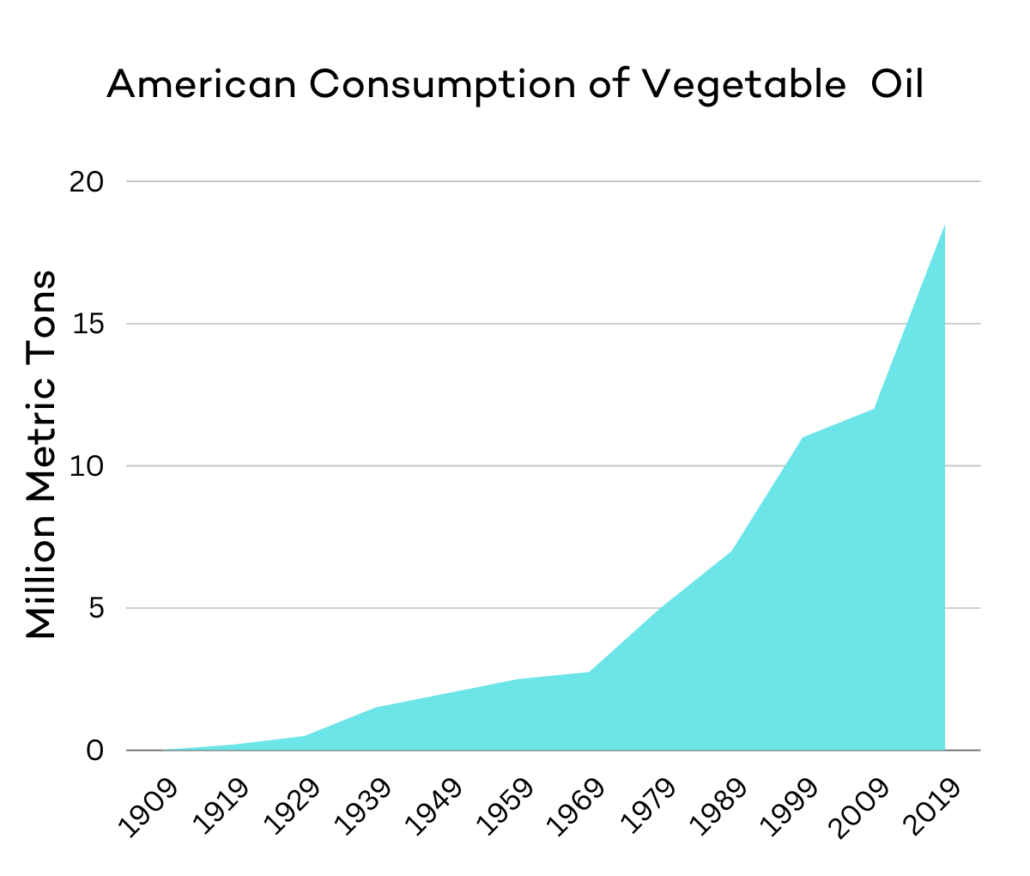
Is Linoleic Acid Bad for You? What the Research Says
Here’s a rundown of relevant modern research that explores the various ways that linoleic acid can be harmful.
Obesity
In a study on mice, LA has been shown to cause obesity, insulin resistance, and reduced physical activity more significantly than saturated fats.
In overweight or obese individuals, meals high in LA may also increase levels of ghrelin, a hormone that stimulates appetite, and resistin, which impairs insulin signaling.
Metabolic Syndrome
Metabolic syndrome entails a cluster of conditions, including abdominal obesity, high blood pressure, elevated glucose and triglycerides, and low HDL cholesterol. It is also associated with higher markers of inflammation and oxidative stress, which can increase the risk of heart disease.
In children, LA and its oxidized metabolites (OXLAM) have been linked to intrahepatic fat accumulation, liver injury, and impaired insulin secretion.
OXLAM produced from LA has been found to damage various physiological structures, including DNA, mitochondria, cell membranes, proteins, and stem cells.
Heart Disease
Modern research suggests that the key factor driving heart disease appears to be the oxidation of PUFAs, specifically LA, in cell membranes. This would explain findings from various large-scale studies looking at the effects of PUFA consumption on heart health.
For example, The Sydney Diet Heart Study, was conducted essentially to confirm the belief that reducing saturated fatty acids and consuming more PUFAs, including LA, reduced heart disease. However, the results showed that participants in the high PUFA group experienced a significantly higher risk of both all-cause mortality and cardiovascular disease mortality compared to those in the control group.
Another large-scale study, known as the Cardiovascular Health Study, found that higher levels of LA in the blood were associated with a higher risk of all-cause mortality as well as cardiovascular disease and cancer mortality.
Two other large cohort studies, the Nurses’ Health Study and the Health Professionals Follow-up Study, found that greater consumption of LA was associated with a higher risk of coronary heart disease mortality.
Cognitive Impairment
Studies show that the oxidized metabolites from linoleic acid are linked to impaired memory and an increased risk of Alzheimer’s disease. In particular linoleic acid-rich Canola oil has been linked to Alzheimer’s.
In a 2020 study using mice, researchers discovered that a high soybean oil diet not only resulted in obesity and diabetes but also had potential impacts on neurological conditions, including autism, Alzheimer’s disease, anxiety, and depression.
A 2023 study found that a higher intake of linoleic acid from vegetable oils was associated with higher rates of cognitive impairment among middle-aged Italians. Whereas intake of saturated fatty acids (from animal sources) was associated with lower rates of cognitive impairment.
Cancer
Research from 2022 found polyunsaturated fatty acids, including linoleic acid are degraded through oxidation in the body into a compound called reactive aldehyde 4-hydroxynonenal (4-HNE). This compound increases the risk of cancer by impairing mitochondrial function and increasing systemic oxidative stress.
Animal studies have shown that higher consumption of seed oils is linked to a greater incidence of cancer. These animals typically develop cancer when linoleic acid (LA) makes up 4% to 10% of their energy intake.
PUFAs can also act as a cancer “sensitizer,” sparking cancer development when combined with the widespread synthetic chemicals in our environment, which are usually pretty harmless on their own. One study even found that dietary PUFAs can turn tiny doses of heterocyclic amines from nearly harmless to highly carcinogenic.
Increased Mortality
In a study looking at patients with coronavirus, researchers found that oxidized metabolites from vegetable oils depleted glutathione levels in the liver, thereby impeding antioxidant defenses, reducing immune function, and increasing mortality.
What Oils are Highest in Linoleic Acid?
The graph below lists the commonly used oils with the highest percentage of LA. Note that soybean oil is the main ingredient in most commercial mayonnaise and most bottled salad dressings.
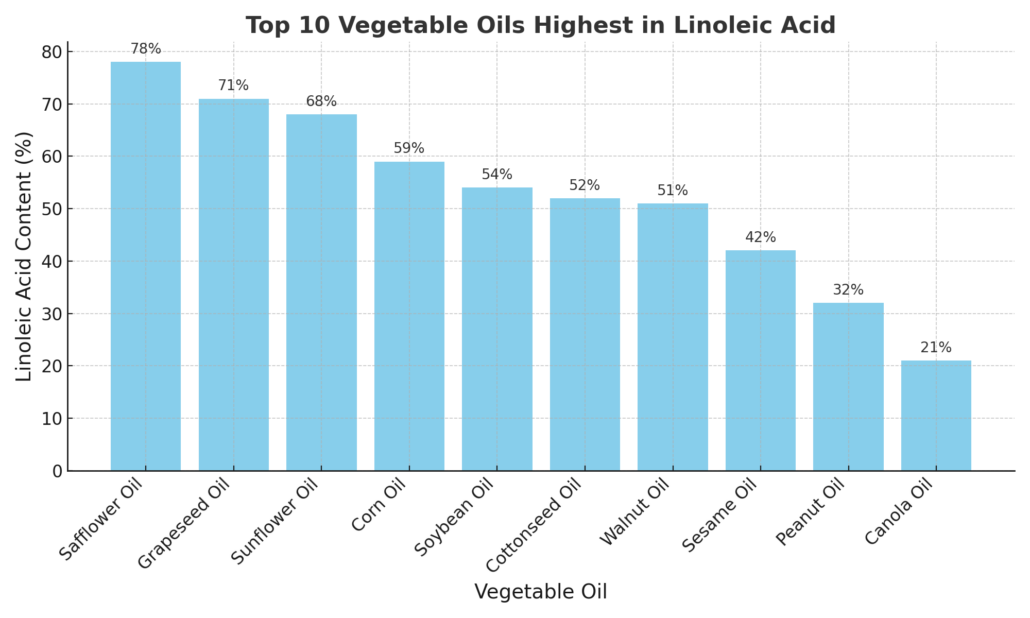
Is Linoleic Acid Bad for You: The Bottom Line
The chronically high intake of linoleic acid in the modern Western diet has been linked to increased inflammation, obesity, and metabolic disorders. Animal studies have shown that diets rich in linoleic acid can lead to greater weight gain and insulin resistance compared to saturated fats.
Additionally, linoleic acid consumption can elevate levels of inflammatory markers and oxidized metabolites, contributing to chronic diseases.
Reducing processed seed oils and incorporating more whole, nutrient-dense fatty animal products can be a vital step towards better health and well-being.













